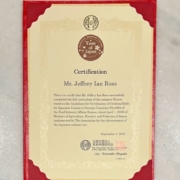Time to Consider Immersive Vacations
As another summer draws to a close, many who were fortunate enough to take a vacation find themselves reflecting on their experiences. If you’re looking for something different next time, consider the idea of immersive or ‘slow’ vacationing
What is Immersive Travel?
Immersive travel involves spending a significant period of time—usually two or more weeks—in a single location. This contrasts sharply with the typical “hit and run” style of traveling, where you rush from one destination or attraction to another. Instead of ticking off tourist sites, immersive travel encourages deeper engagement with the destination, enabling you to better appreciate and understand the local culture and lifestyle.
Who is Immersive Vacations Best For?
Immersive travel is ideal for individuals, couples, and families with flexible jobs, such as academics, public school teachers, remote workers, and digital nomads. It provides a break to the rigid schedules of traditional vacations. Additionally, if you’re able to give up or rent out your residence while you’re away, it can help offset the costs, making this form of travel more affordable.
Why Choose Immersive Travel?
There are numerous reasons why immersive vacationing may be a good alternative. These include the following:
Leisurely Exploration: Rather than cramming multiple well-known places to visit into a short period, immersive travel lets you explore a city or region at a relaxed pace. This slower approach offers the luxury of time to uncover lesser-known attractions (and spontaneous opportunities) that are often missed in a typical world wind travel itinerary.
Local Experiences: Staying longer in one place gives you more opportunities to shop at local markets, try new foods, and interact with locals. Visiting public markets, for example, opens up opportunities to select fresh and different ingredients, and attempting to prepare selected dishes from the local cuisine at your temporary digs allows you to engage with the culture in a deeper manner. Instead of the “hit and run vacation,” where dining is confined to restaurants, another benefit of this approach may lead to a healthier diet as you include a greater variety of fresh vegetables, fruits, and wholesome ingredients.
Avoiding Crowds: With more time on your hands, you can visit popular attractions during quieter times, avoiding the rush of peak tourist hours. This not only makes the experience more enjoyable but also allows for deeper, more meaningful engagement with the places you visit.
Authentic Connections: By spending extended time in a location, you’re more likely to form connections with locals. This can lead to a better understanding of the place’s culture and language, fostering richer, more memorable experiences.
Potential Drawbacks
Although immersive travel offers many benefits, it’s not without potential drawbacks:
Accommodation Issues: Staying in a place for more than a few days often means opting for accommodations like an Airbnb, apartment hotel, or home exchange. With these arrangements, there’s a risk of encountering less-than-ideal living conditions. For instance, you might end up in a noisy environment—imagine neighbors renovating their apartment next door, roosters crowing at 5 a.m., or dogs barking through the night. These inconveniences can be frustrating, especially during a long stay.
Predictability vs. Adventure: Some travelers prefer the predictability of resorts and cruises, where most aspects of the trip are managed for them. Immersive travel, on the other hand, involves a level of unpredictability and requires a willingness to adapt to new environments and situations.
Solutions to possible challenges
To mitigate potential downsides, it’s important to spend more resources (esp. time) engaging in strategic planning. Start by thoroughly researching online reviews of your possiblr accommodations. If there are only a few reviews, it might be wise to pass and find a place with a more established reputation. Additionally, consider reaching out to the owner or landlord and asking detailed questions about the space, amenities, noise levels, and any other concerns you might have. In some cases, doing a short trial stay before committing to a longer period can also help you assess whether the accommodation meets your needs. These steps offer more control over your trip, helping you avoid unpleasant surprises.
Wrapping up
Immersive travel can transform your next vacation into a richer, more meaningful experience. By slowing down and spending more time in a single location, you’ll have the opportunity to engage deeply with the culture, form authentic connections, and enjoy a more leisurely exploration of your destination. Although there are potential challenges, careful planning and a bit of flexibility can help you make the most of this approach to travel and vacationing.
Image credit:
Painter Alex Colville
Title: To Prince Edward Island, 1965











